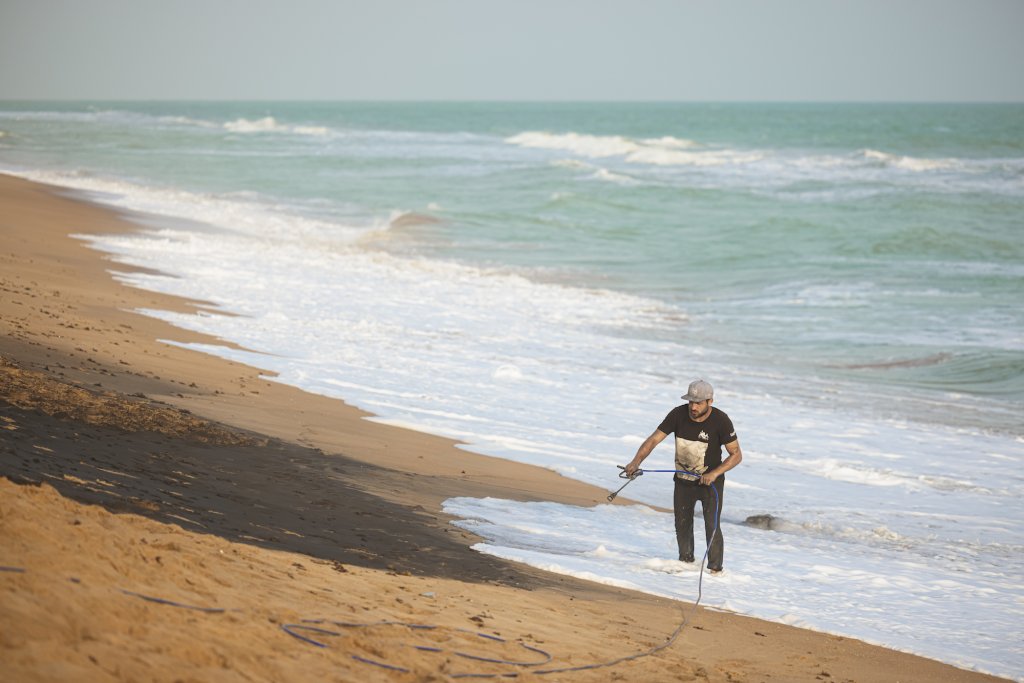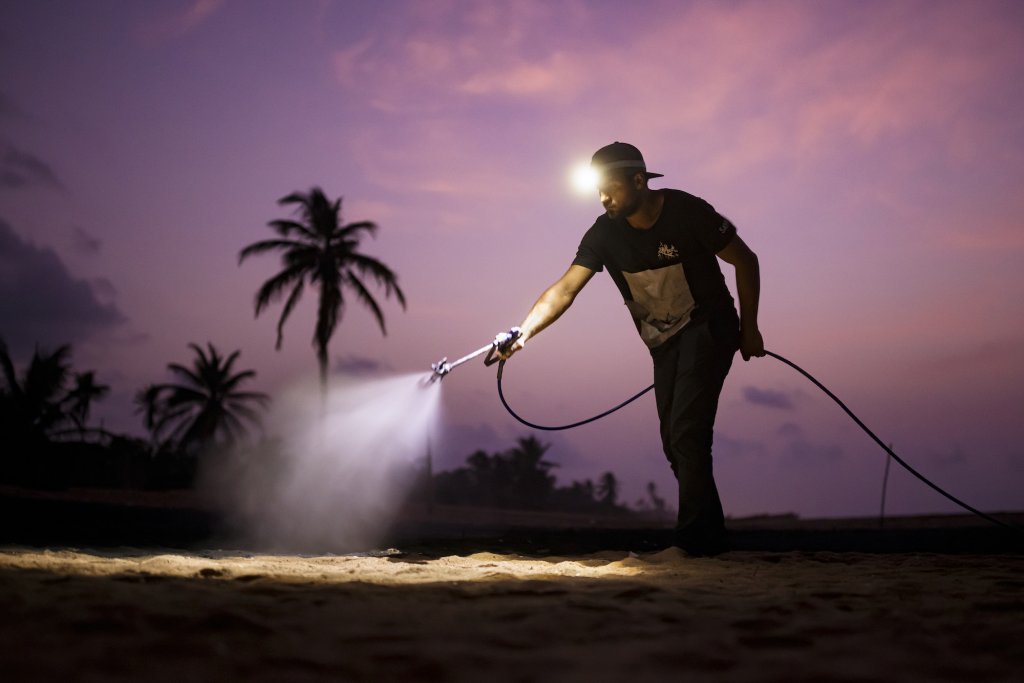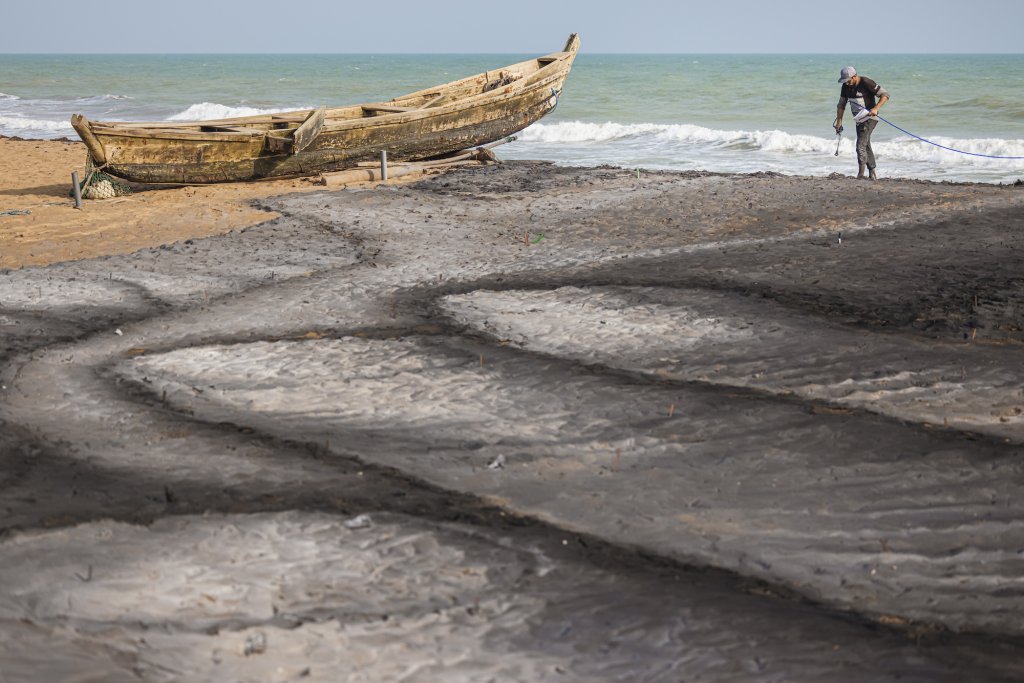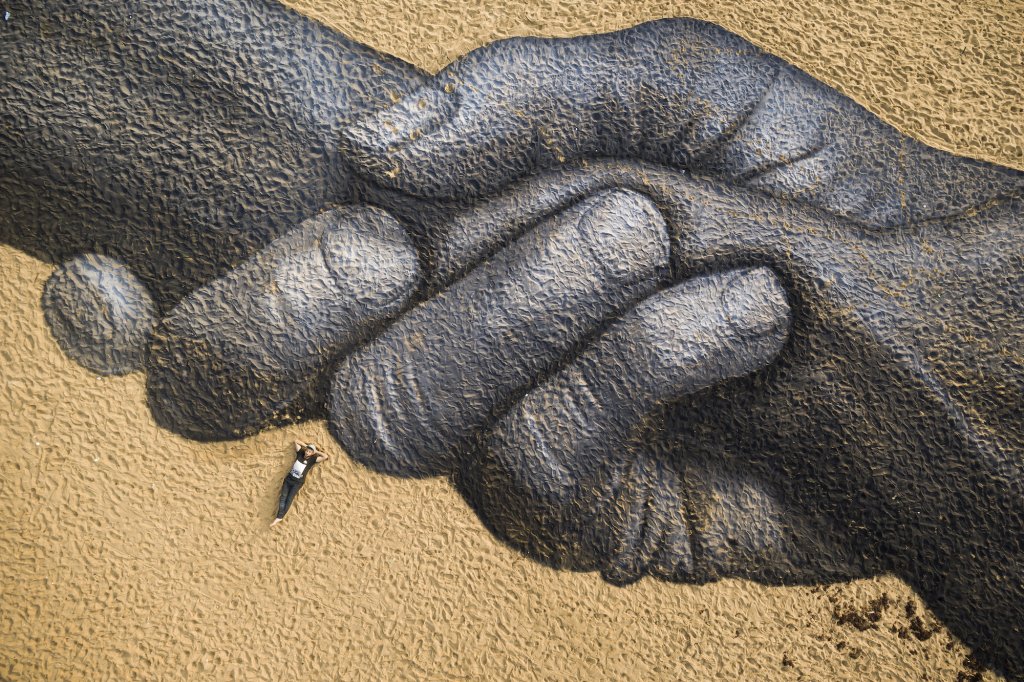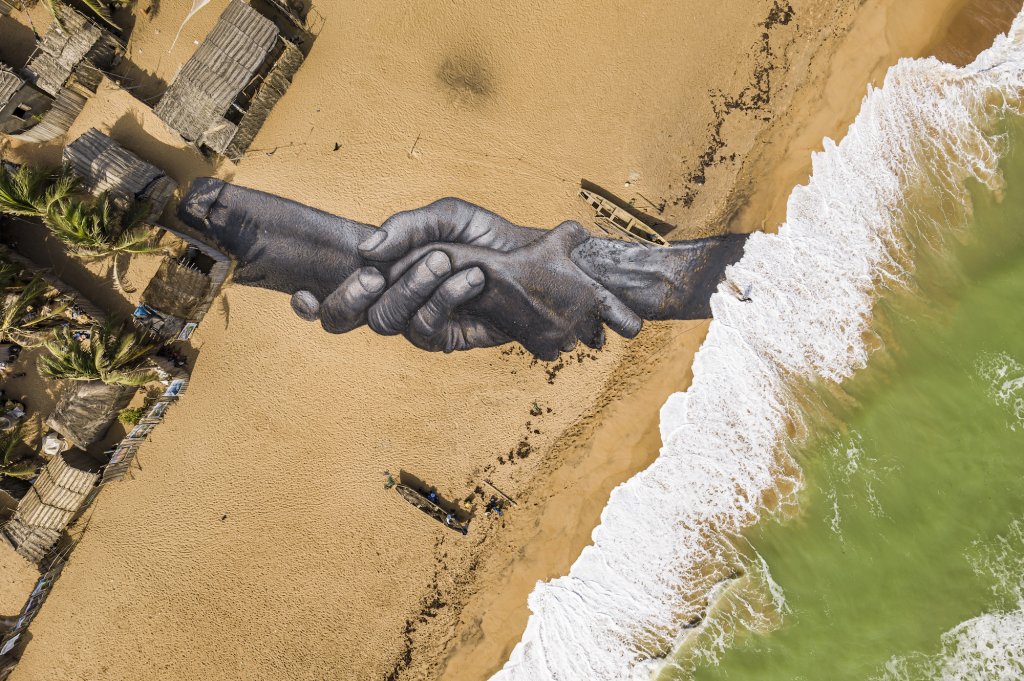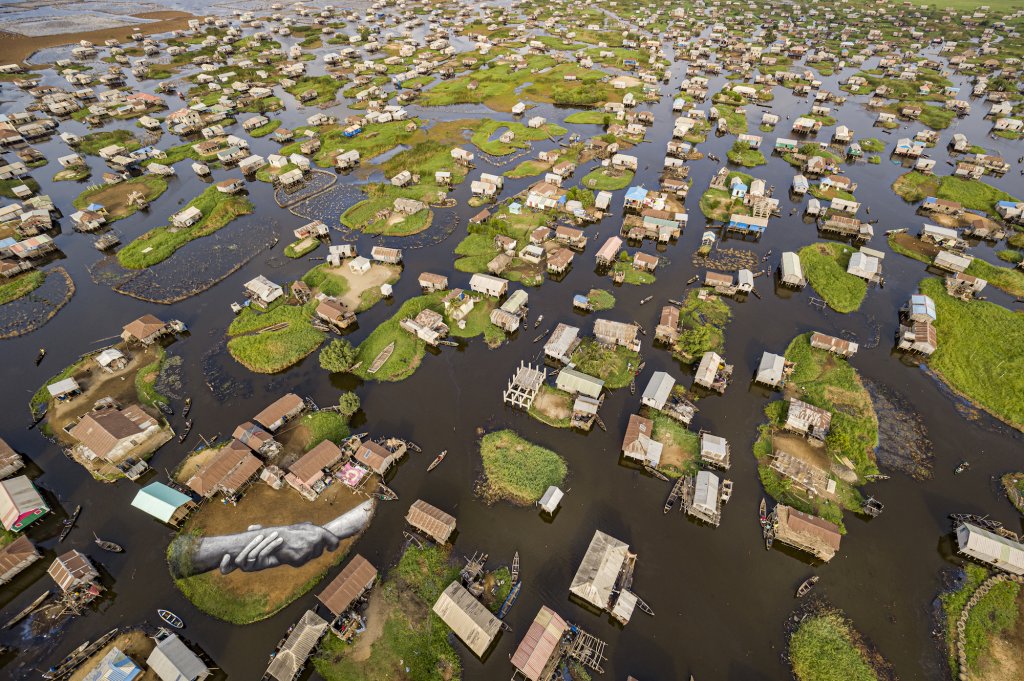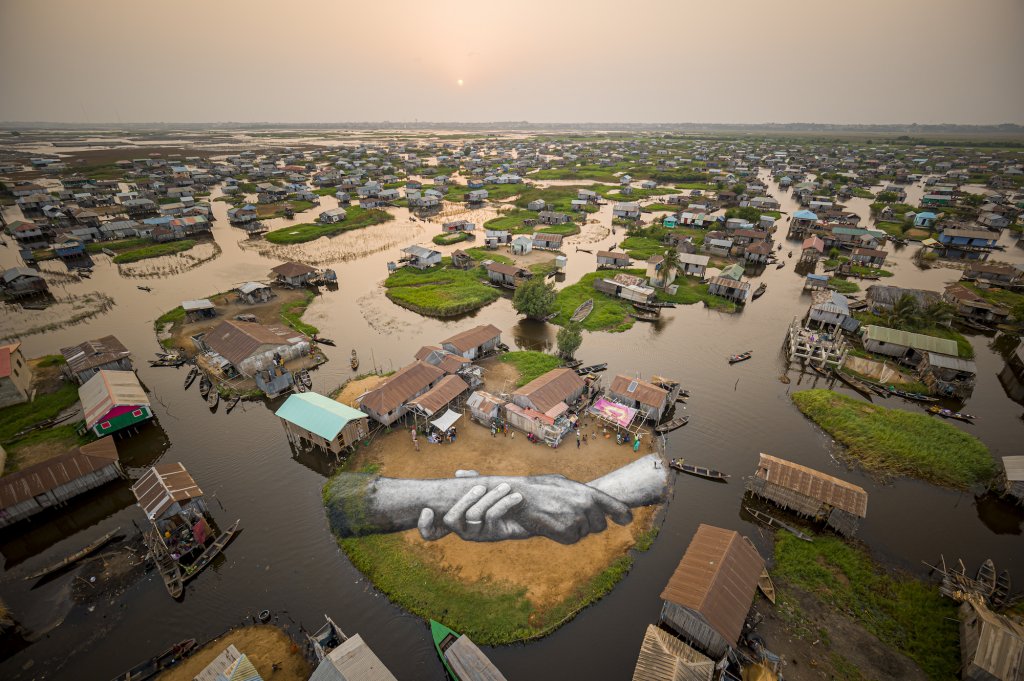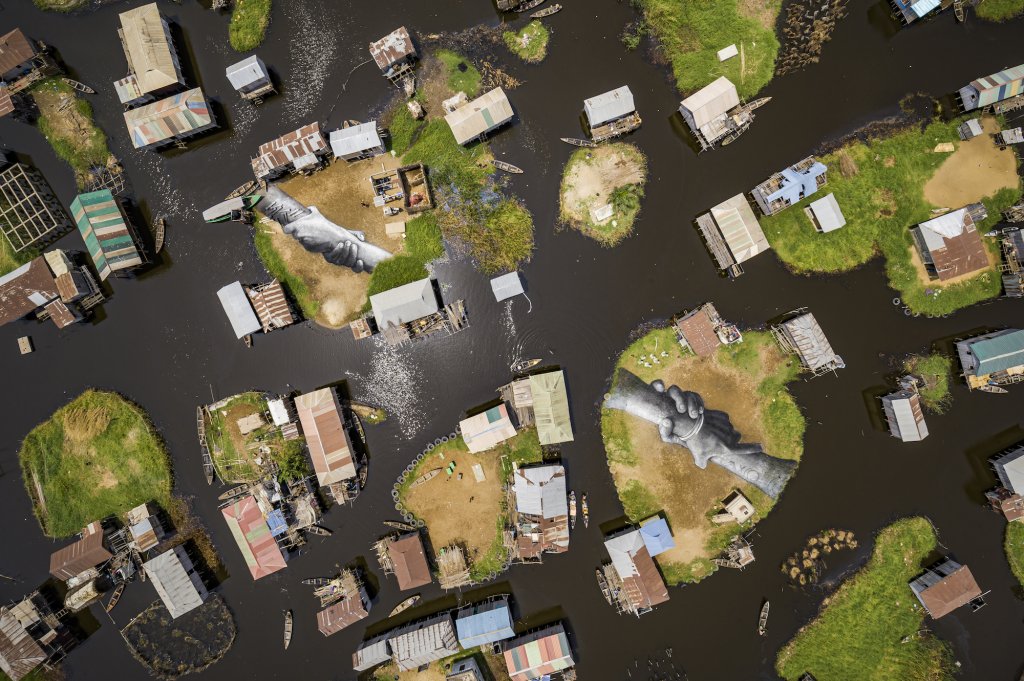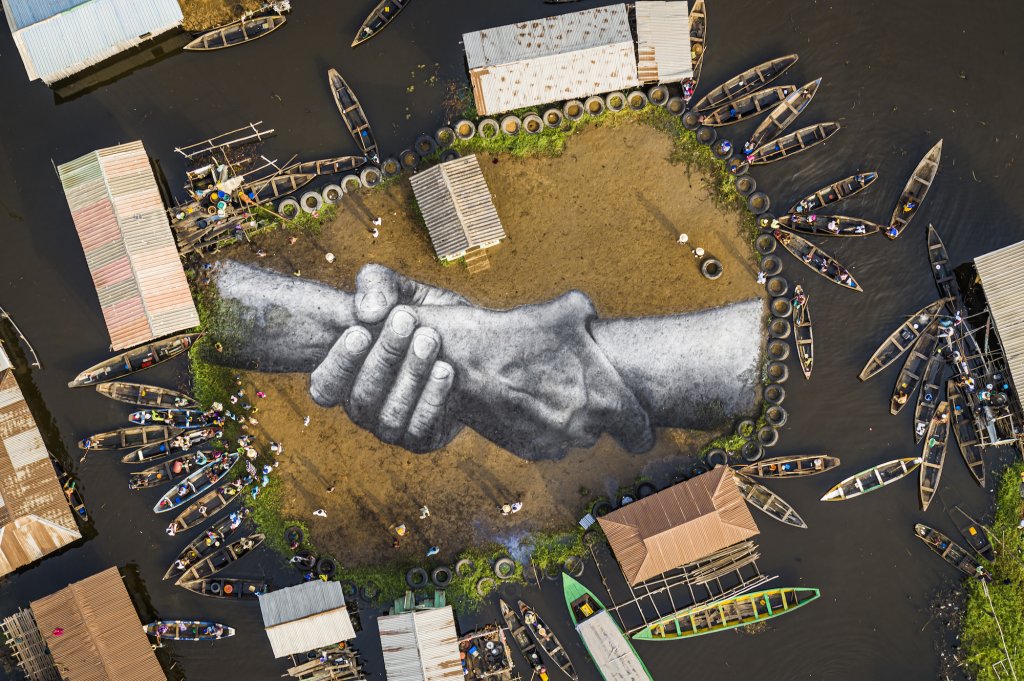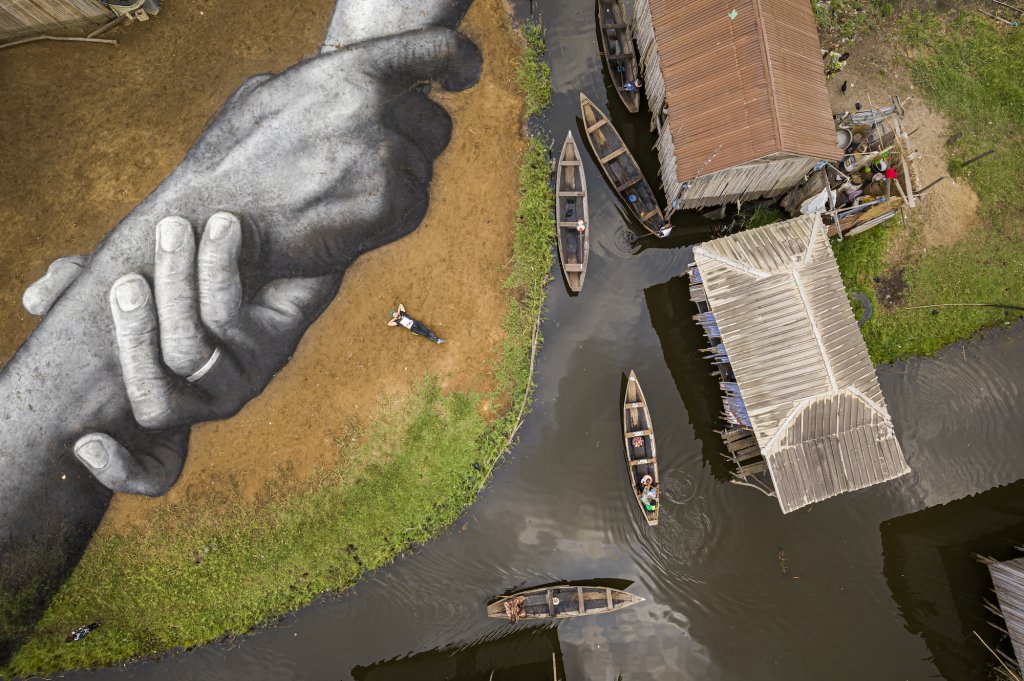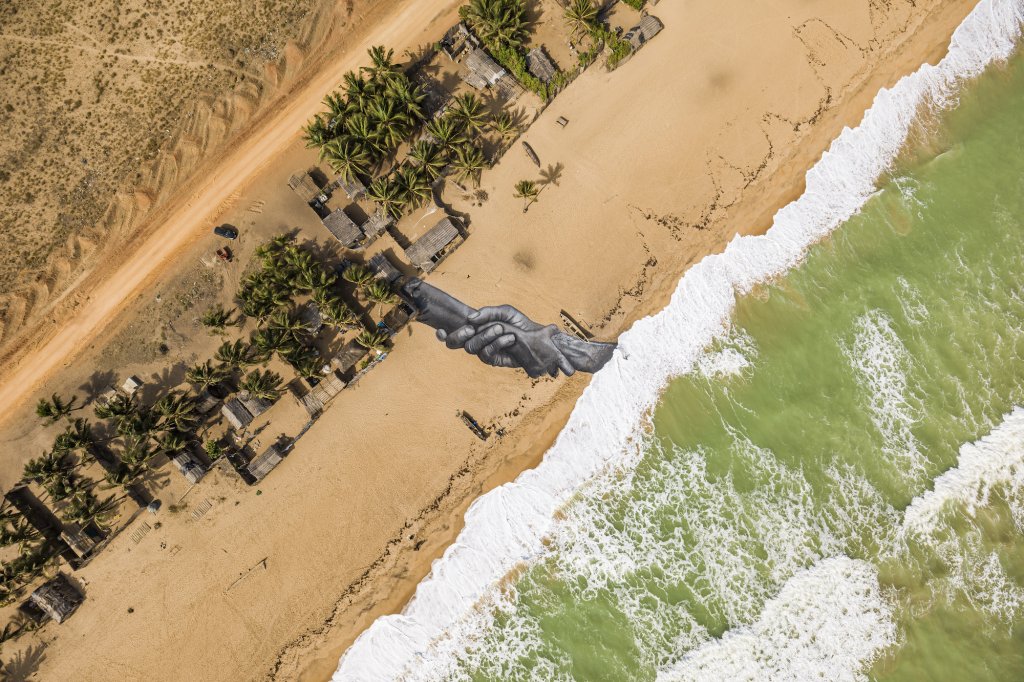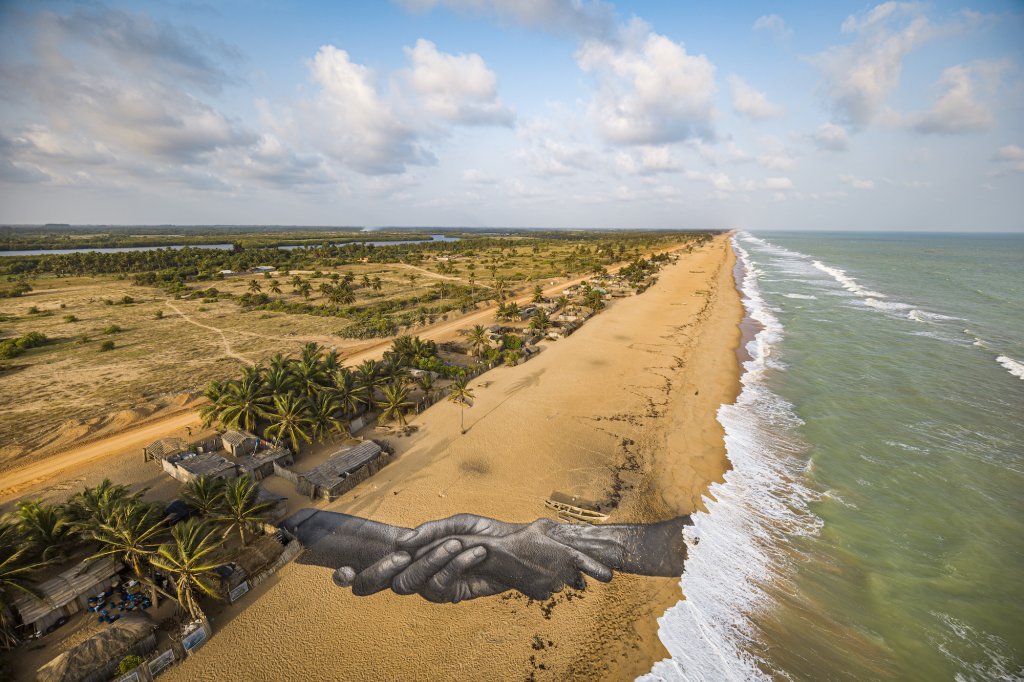French-Swiss artist Saype’s worldwide ‘Beyond walls Project’ extends his tenth step symbolic human chain project to Benin. After a year disrupted by the COVID-19 pandemic that has upset the daily life of people around the world, especially jeopardizing art and culture, the artist is proud of completing this anniversary milestone.
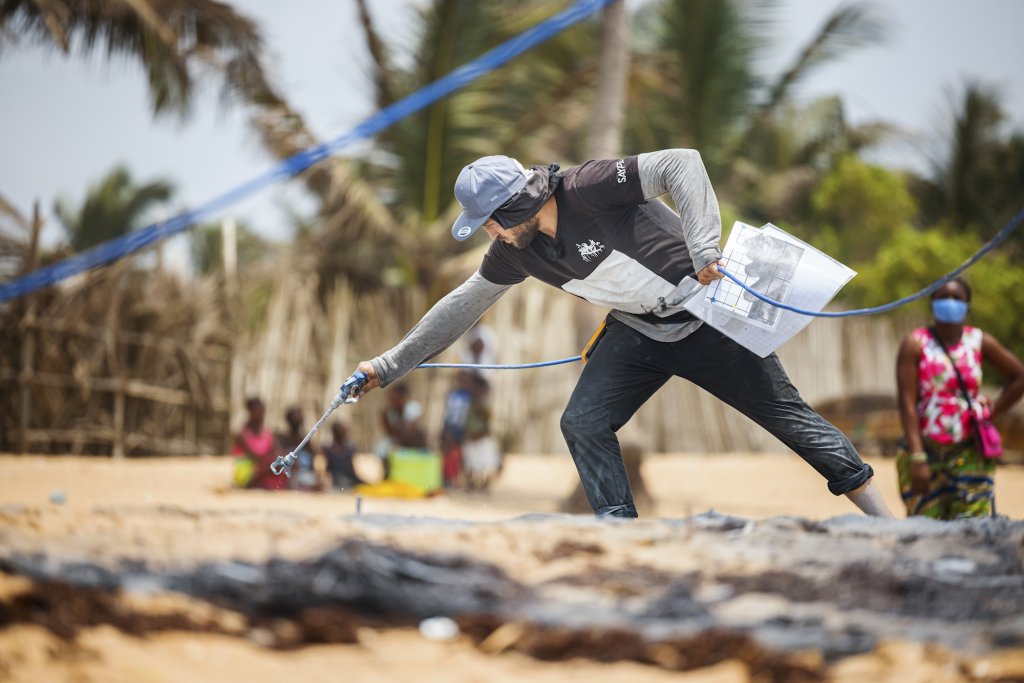
French-Swiss artist Saype works on a giant landart fresco, painted for the 10th step of his worldwide “Beyond Walls” project on the beach in Ouidah, Benin, on Sunday March 7, 2021. (Valentin Flauraud for Saype – EDITORIAL USE ONLY)
After almost two years, three continents have been visited, 37 pairs of hands painted and 77’300 square meters sprayed with biodegradable paint developed by the artist. The symbolic human chain launched in the city of love, Paris and then travelled to Engolasters in Andorra. Saype then stepped into Geneva, Switzerland. Step 4 took the human chain to Berlin, step 5 to Ouagadougou, step 6 to Yamoussoukro and Step 7 to Turin. Step 8 sees Saype link Europe to Asia via Istanbul. Step 9 crosses 3 neighbourhoods in Cape Town and now Saype finds himself in Benin.
Dedicated to friendship and togetherness, each of the ten-step carries a universal message. With a seemingly common visual, every step nevertheless carries a peculiar symbolism that stems from the culture and history of each location. Moreover, although anonymous, the hands painted on the ground also highlight the individual lives and drastically different realities that the artist hopes to unite.
French-Swiss artist Saype works on a giant landart fresco, painted for the 10th step of his worldwide “Beyond Walls” project on the beach in Ouidah, Benin, on Monday March 8, 2021. Photo Credit Valentin Flauraud for Saype
Here in Benin, the artist has chosen two emblematic locations tragically marked by slavery. First in Ouidah, the village of Abouta, one of the main slave trade hub in Africa. This was the starting point of a long one-way crossing for millions of Africans across the Atlantic. Secondly, the village on stilts of Ganvié where populations fleeing the slave trade raids found shelter. The giant hands of “Beyond Walls” link these two places, as if those who avoided slavery strived to hold back those who would have left never to come back.
French-Swiss artist Saype works on a giant landart fresco, painted for the 10th step of his worldwide “Beyond Walls” project on the beach in Ouidah, Benin, on Tuesday March 9, 2021. Valentin Flauraud for Saype
Five frescoes were created using approximately 700 litres of biodegradable pigments made out of charcoal, chalk, water and milk proteins.
French-Swiss artist Saype works on a giant landart fresco, painted for the 10th step of his worldwide “Beyond Walls” project on the beach in Ouidah, Benin, on Monday March 8, 2021. Photo Credit Valentin Flauraud for Saype
Here in Benin, the tenth step promoting values such as togetherness, kindness and openness to the world was motivated by the country’s tragic slave history.
French-Swiss artist Saype works on a giant landart fresco, painted for the 10th step of his worldwide “Beyond Walls” project on the beach in Ouidah, Benin, on Monday March 9, 2021. Photo Credit Valentin Flauraud for Saype
The area became known to Europeans as the “Slave Coast,” and the principal centre for the trade was the coastal kingdom of Ouidah.
An aerial view shows a giant landart fresco by French-Swiss artist Saype, painted for the 10th step of his worldwide “Beyond Walls” project on the beach in Ouidah, Benin, on Monday March 8, 2021. Photo credit Valentin Flauraud for Saype
Four frescoes (1000 Sq. m in total) were painted in the floating village of Ganvie, originally a refuge from slave capture raids.
“Being able to paint directly on the small islands of the people of Ganvie was amazing. This village on stilts was originaly created as a shelter from the slave trade raids. Once again, thank you so much for your warm welcome!” Saype
The land art painted in Ganvié was biodegradably painted on the sand.
An aerial view shows a giant landart fresco by French-Swiss artist Saype, painted for the 10th step of his worldwide “Beyond Walls” project in Ganvie, village on stilts, Benin, on Thursday March 4, 2021. Photo credit Valentin Flauraud for Saype An aerial view shows a giant landart fresco by French-Swiss artist Saype, painted for the 10th step of his worldwide “Beyond Walls” project in Ganvie, village on stilts, Benin, on Wednesday March 3, 2021. Photo credit Valentin Flauraud for Saype An aerial view shows two giant landart frescoes by French-Swiss artist Saype, painted for the 10th step of his worldwide “Beyond Walls” project in Ganvie, village on stilts, Benin, on Friday March 5, 2021. Valentin Flauraud for Saype An aerial view shows a giant landart fresco by French-Swiss artist Saype, painted for the 10th step of his worldwide “Beyond Walls” project in Ganvie, village on stilts, Benin, on Wednesday March 3, 2021. Valentin Flauraud for Saype French-Swiss artist Saype poses in his giant landart fresco by, painted for the 10th step of his worldwide “Beyond Walls” project in Ganvie, village on stilts, Benin, on Thursday March 4, 2021. Valentin Flauraud for Saype
In parallel, a fifth fresco was painted by the ocean in the village of Abouta (1000 Sq. m), Ouidah district, the beach that saw millions of slaves sent off across the Atlantic.
An aerial view shows a giant landart fresco by French-Swiss artist Saype, painted for the 10th step of his worldwide “Beyond Walls” project on the beach in Ouidah, Benin, on Monday March 8, 2021.Valentin Flauraud for Saype An aerial view shows a giant landart fresco by French-Swiss artist Saype, painted for the 10th step of his worldwide “Beyond Walls” project on the beach in Ouidah, Benin, on Monday March 8, 2021.Valentin Flauraud for Saype
This step of the project will take place in two phases and should soon be completed with a new destination allowing the project to reach a new continent, following the path of those who left never to come back.
Photo credit: Valentin Flauraud for Saype
